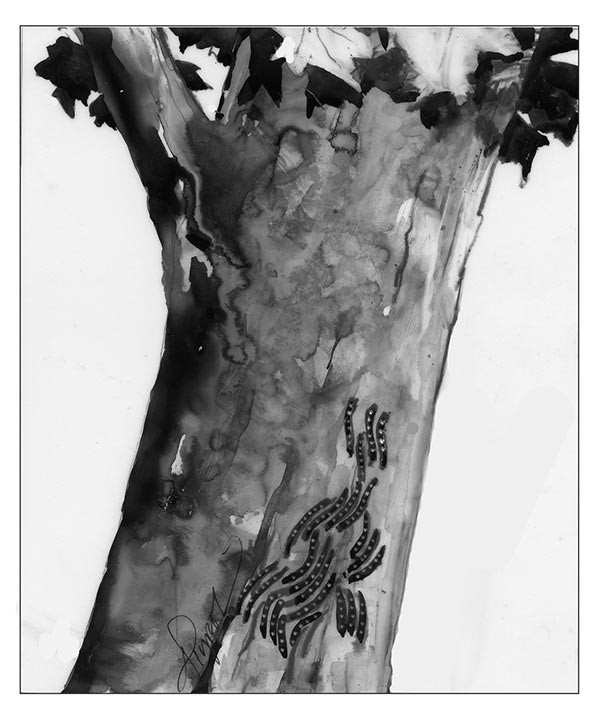
Walk through a hardwood forest this month and it may seem more like October than July. Trees that normally provide cool shade have bare crowns with just a hint of green. And is the bark on that sugar maple moving? This is not a trick of the light: you are, in fact, in the middle of a forest tent caterpillar outbreak.
Despite the name, forest tent caterpillars don’t actually build tents like their cousins the eastern tent caterpillars. Instead, you’ll find them congregated on silken mats on tree trunks or branches. If you’re in an infested area, they won’t be hard to find. Sugar maples and aspen are often the favorite host species in the Northeast, as well as birch, cherry, basswood, and ash.
The caterpillars emerge in early spring and gather together to stay warm. This is important: the faster they grow, the lower the chance of being eaten by birds or attacked by other pests or pathogens. In the early stages, they move as a pack following secreted silken trails to feed at the best sites. As they grow bigger, they become increasingly independent: the weather is warming and the competition for food is increasing.
Over a period of seven to eight weeks, the caterpillars complete five stages of development. During the final two stages, the caterpillar may consume about 80 percent of the total food taken. It’s also when they produce the largest quantity of fecal pellets, or frass. If you stand in the forest in an outbreak area it may sound like it’s raining, but it’s actually the sound of the frass hitting the forest floor.
By mid-July, the mature caterpillars are nearly 2-inches long. They have a broad band of blue along each side and a row of whitish keyhole-shaped spots down the center of their back. They are ready to seek a protected spot, perhaps in the leaves, or under a bit of bark, to build a cocoon.
They will emerge two weeks later as a rather bland brown moth ready to look for a mate. Once this is accomplished, the females will disperse and lay up to 350 eggs in the upper-crown branches of a host tree. The larvae overwinter in dark brown egg masses and hatch in the spring.
The caterpillar population follows a boom and bust cycle with outbreaks occurring every decade or so – New Hampshire, Vermont, and parts of Quebec are a few years into a population boom phase. During an outbreak year, extensive areas can be completely defoliated. In 2016, the Vermont Department of Forest Parks and Recreation estimated 24,500 acres were defoliated. According to Barbara Schultz, the Forest Health Program Manager for the state, 2017 is expected to be even worse. She said that state researchers won’t know for sure until they do flyover estimates later in July.
However, according to Schultz, the cool wet spring may have helped to spread fungal and viral diseases that control the caterpillar population. People have been reporting dead caterpillars, which indicates that natural controls are at work. Generally after about three years of heavy caterpillar defoliation, the population collapses due to natural causes, though there have been outbreaks that have lasted as long as seven years.
Forest tent caterpillars are native to New Hampshire and Vermont. An outbreak may look pretty terrible, but the trees have evolved with this pest and have usually stored enough energy to survive. Historically, weather, natural parasites, predators, and disease control the population before serious long-term damage can occur.


Discussion *